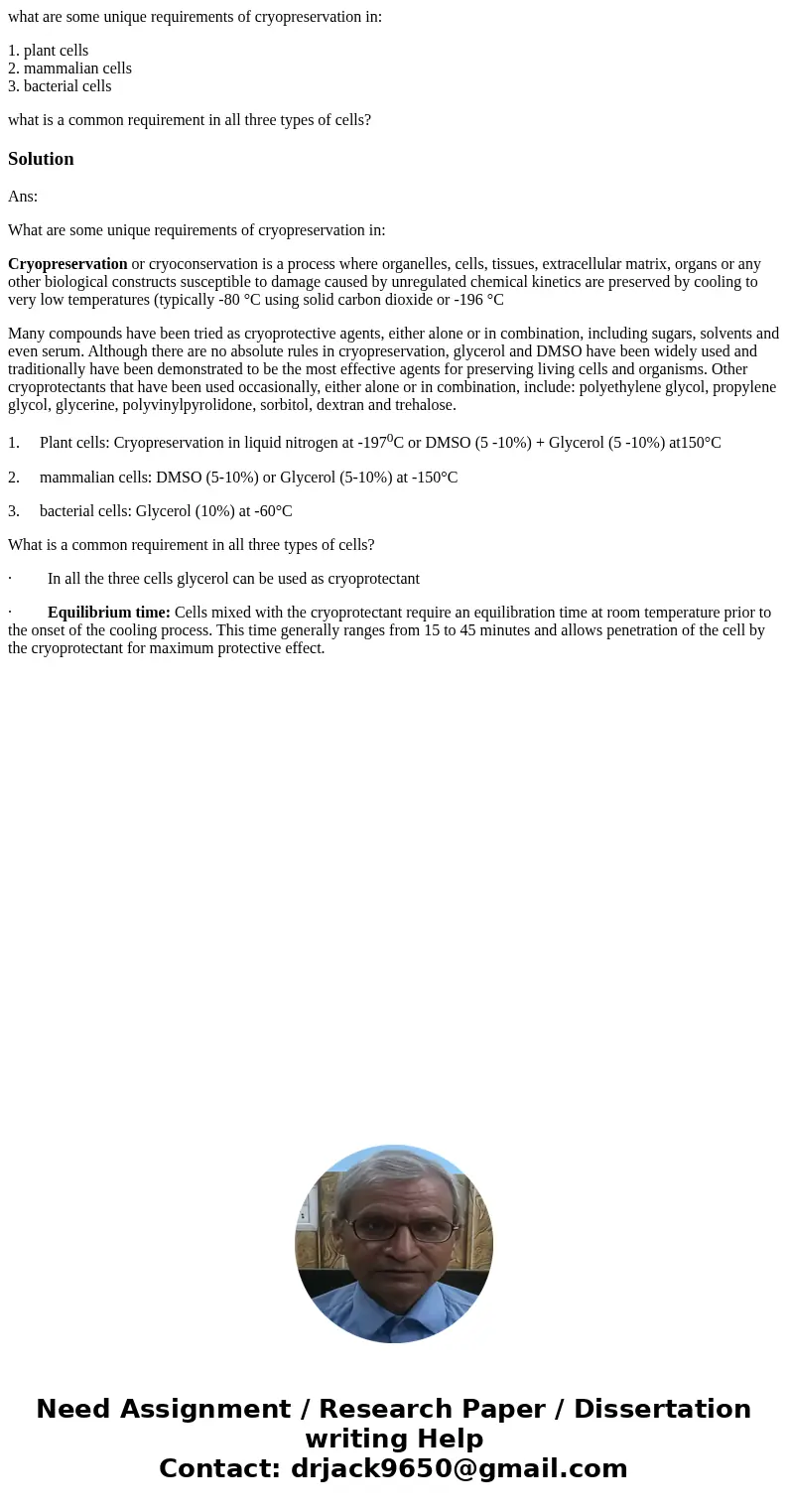what are some unique requirements of cryopreservation in 1 p
what are some unique requirements of cryopreservation in:
1. plant cells
2. mammalian cells
3. bacterial cells
what is a common requirement in all three types of cells?
Solution
Ans:
What are some unique requirements of cryopreservation in:
Cryopreservation or cryoconservation is a process where organelles, cells, tissues, extracellular matrix, organs or any other biological constructs susceptible to damage caused by unregulated chemical kinetics are preserved by cooling to very low temperatures (typically -80 °C using solid carbon dioxide or -196 °C
Many compounds have been tried as cryoprotective agents, either alone or in combination, including sugars, solvents and even serum. Although there are no absolute rules in cryopreservation, glycerol and DMSO have been widely used and traditionally have been demonstrated to be the most effective agents for preserving living cells and organisms. Other cryoprotectants that have been used occasionally, either alone or in combination, include: polyethylene glycol, propylene glycol, glycerine, polyvinylpyrolidone, sorbitol, dextran and trehalose.
1. Plant cells: Cryopreservation in liquid nitrogen at -1970C or DMSO (5 -10%) + Glycerol (5 -10%) at150°C
2. mammalian cells: DMSO (5-10%) or Glycerol (5-10%) at -150°C
3. bacterial cells: Glycerol (10%) at -60°C
What is a common requirement in all three types of cells?
· In all the three cells glycerol can be used as cryoprotectant
· Equilibrium time: Cells mixed with the cryoprotectant require an equilibration time at room temperature prior to the onset of the cooling process. This time generally ranges from 15 to 45 minutes and allows penetration of the cell by the cryoprotectant for maximum protective effect.

 Homework Sourse
Homework Sourse